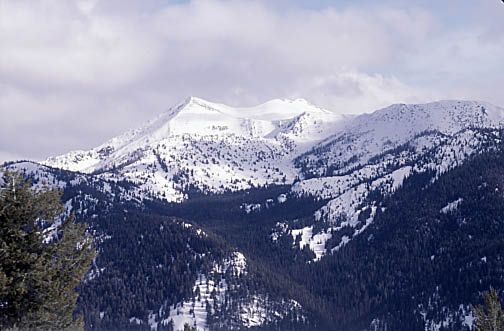 The state of Washington is much like its neighbor to the south, Oregon, when it comes to snow. The snow is wetter and more dense on the west side of the state, “drying” out and becoming light, dry powder as it crosses the state.
The state of Washington is much like its neighbor to the south, Oregon, when it comes to snow. The snow is wetter and more dense on the west side of the state, “drying” out and becoming light, dry powder as it crosses the state.
If Washington has an edge, though, it may be in what we’d call “superstar” mountains. Washington has several peaks that are very impressive. And depending on where you ride in the state, you may be able to see several of them (actually including Oregon’s Mt. Hood) all from one vantage point. Those famous peaks along the Cascade Range include Mt. Rainier, Mt. Adams, Mt. St. Helens and Mt. Baker.
Of course there’s more riding in Washington than just along the Cascade Range. In the middle and eastern side of the state is some of the best backcountry riding you’ll find from border to border. And down in the southeast corner of the state are the Blue Mountains, an island of riding that is far from the masses.
 The snowmobiling in Washington is scattered among 12 different riding locations that have official trail grooming programs. There are also a couple of areas where sledders can enjoy the white stuff but don’t have any groomed trails.
The snowmobiling in Washington is scattered among 12 different riding locations that have official trail grooming programs. There are also a couple of areas where sledders can enjoy the white stuff but don’t have any groomed trails.
With few exceptions, the world on the east side of the Cascades is covered in white during the winter months. Covered deep. Seven of the top 14 spots in the United States with more than 400 inches of snow a year can be found within the borders of the Evergreen State. Rainier Paradise Ranger Station leads the way with 674.2 inches of snow each year, followed by Stevens Pass (493.2 inches), Santiam Pass (453.3), Snoqualmie Pass (439.9) and Stampede Pass (438.7). That’s between 36 to 56 feet of snow.
The snow season in much of the state got off to a roaring start. For example, by the middle of December (right on our deadline for this issue), there was 84 inches of snow sitting on Stevens Pass (elevation 3,950 feet). Farther north on Beaver Pass there was 83 inches sitting on the ground, thanks in part to 29 inches of new snow in three days prior to our checking the snotel site.
A good source of information for riding in Washington is on the state’s parks website, www.parks.wa.gov/winter, and then navigate to the sno-parks section where you’ll find trail maps.
 Mt. Rainier National Park
Mt. Rainier National Park
Some snowmobiling is allowed in Mt. Rainier National Park. The following information comes directly from the National Park Service website.
In the southwest corner of the park, snowmobiles are permitted for 6.5 miles along the Westside Road from its junction with the main park road as far as Round Pass. Beyond Round Pass, the Westside Road is closed to snowmobile use. Snowmobiles are also permitted on all the road loops of Cougar Rock Campground. The campground is closed to overnight use during winter and the roadway is left unplowed. Contact a park ranger at the Longmire Information Center for maps and additional snowmobile information.
On the north side of the park, no ranger station is open in the winter. The US Forest Service District Office in Enumclaw provides information and maps for White River, Carbon River, and Mowich Lake areas. For more information, call the USFS District Office in Enumclaw at (360) 825-6585. Highway 410 is closed near its junction with Crystal Mountain Ski Area road, at the north park boundary.
Snowmobiles are permitted on the 12-mile section of unplowed road from the north park boundary on Highway 410 to the White River Campground. Snowmobiles may not continue on Hwy 410 south of the White River Road turnoff. They are also prohibited from proceeding beyond the closure at the White River Campground road junction towards Sunrise. Snowmobiles must stay on the road corridor; they are not allowed to proceed beyond the campground towards Glacier Basin. Be aware of “http://www.nps.gov/mora/planyourvisit/upload/avalanche%20danger%20Nov09.pdf” avalanche danger and the http://www.nps.gov/mora/planyourvisit/weather.htm weather forecast.
More information and a map is available on www.nps.gov/mora.